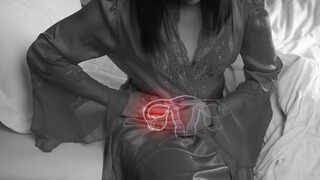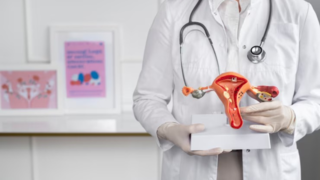In this article:
The impact of retroversion of uterus depends on several factors. Fortunately, most people with this condition can lead healthy reproductive lives with the right care.
Impact on Fertility
A retroverted uterus itself does not affect your ability to conceive. That’s one thing you can be stress-free about. You can still get pregnant and have a normal pregnancy, as the position of the uterus doesn’t interfere with sperm reaching the egg or implantation. However, if you’re struggling to conceive, other conditions associated with a retroverted uterus might be contributing. These include:- Endometriosis: Tissue growing outside the uterus can cause adhesions that affect fertility by altering the pelvic environment or blocking fallopian tubes.
- Uterine fibroids: These growths can sometimes interfere with implantation or cause changes in the uterus that affect fertility.
- Pelvic inflammatory disease (PID): Scarring from PID can damage reproductive organs and potentially reduce fertility.
Impact of Retroverted Uterus in Pregnancy
This is what you can expect when it comes to a tilted uterus and pregnancy:- First trimester: You might experience increased pressure on your bladder, leading to frequent urination or mild incontinence. Lower back pain may also be more noticeable. Early ultrasounds might be trickier, as the uterus’s position can make it harder to visualise the baby. In such cases, transvaginal ultrasounds may be used instead.
- Second trimester: By weeks 10 to 12, your uterus typically shifts to an anteverted (forward) position as it grows and lifts out of the pelvis. This natural adjustment resolves most discomfort and allows your pregnancy to progress normally.
- Labour and delivery: This type of uterus doesn’t impact labour or delivery. While some people may have back pain during labour, it’s a common experience and not specific to this condition.
Retroverted Uterus Treatment Options
Treatment isn’t necessary if your retroverted uterus causes no symptoms. However, several treatment options can help if you experience discomfort, such as painful intercourse or severe menstrual cramps. These focus on addressing symptoms or correcting the uterus’s position:- Treating underlying conditions: If endometriosis, fibroids, or PID is causing the retroverted uterus or related symptoms, treating these conditions can help.
- Pelvic exercises: Exercises like Kegels or pelvic tilts can strengthen pelvic floor muscles and ligaments, which may help reduce discomfort. To perform Kegels, tighten your pelvic muscles as if stopping urine flow, hold for a few seconds, and release. Other exercises, like knee-to-chest stretches (lying on your back, pulling one knee to your chest for 20 seconds, then switching legs) or pelvic contractions (lifting your buttocks off the ground while lying down) can also help. But remember these exercises won’t work if scarring or adhesions are holding the uterus in place.
- Pessary device: A pessary is a small, silicone or plastic device inserted into the vagina to support the uterus and hold it in a forward position. It’s a temporary solution that can relieve symptoms but carries risks like infection or inflammation if used long-term. Your doctor will discuss whether a pessary is suitable for you.
- Surgical options: In cases of severe symptoms, surgery may be recommended to reposition the uterus. Procedures like uterine suspension or uplift surgery can be done laparoscopically, vaginally, or abdominally and take as little as 10 minutes. These surgeries aim to provide lasting relief from pain.
Managing Discomfort During Intercourse
Painful intercourse is a common symptom of a retroverted uterus, particularly with deep thrusting or certain positions. To manage this, experimenting with different sexual positions can reduce discomfort by avoiding pressure on the uterus. Communicate openly with your partner to find what works best.Consult your healthcare professional if pain persists across all positions or is accompanied by bleeding. They can check for underlying issues and suggest solutions.
A retroverted uterus rarely impacts fertility or pregnancy, and most people carry healthy pregnancies without complications. If underlying conditions are present, treatments like IUI or IVF can support conception. You can consider scheduling a consultation with a specialist who can offer proper advice to support your health if you’re concerned about fertility or any other symptoms.
FAQs on Retroverted Uterus: Impact on Fertility, Pregnancy, and Treatment Options
- Will I need special care for a retroverted uterus in pregnancy?
No, most people with a retroverted uterus have a normal pregnancy without complications. The uterus typically corrects itself as it grows, usually before the second trimester. - Is treatment required for a retroverted uterus?
You probably won’t need any treatment if you don’t have symptoms. But if you experience pain during periods or intercourse, options like pelvic exercises, a pessary, or surgery may help.






